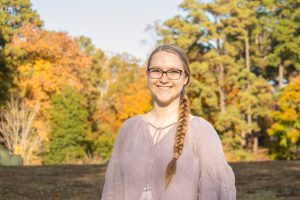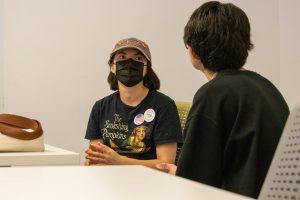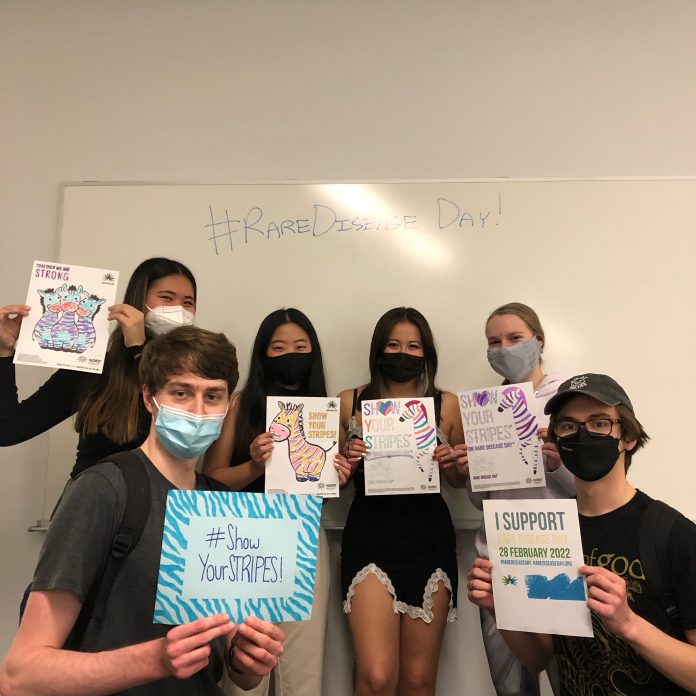Thursday, Dec. 1, Students For Rare, a student organization dedicated to promoting awareness of rare diseases and raising money to aid in the research of these diseases, will launch a new project during its last general body meeting of the semester. Known as Diseases and Disabilities in Media, this upcoming activity will feature a discussion on how underrepresented medical conditions appear in popular culture.
Club President Cate Jones ’24 first broached the idea as a general body member last year. She expressed that she felt the event served as a great conclusion to the first half of the academic calendar for the club
“I thought it was a good way to talk about these things, in a broader social context, because that matters,” Jones said. “You don’t have to just listen to us talk at you, we’re having a conversation together. That’s a nice way to close out our meetings for winter break.”
Although the club is currently voting between discussing “Wonder” and “Five Feet Apart,” club member Sage Futrell ’26 said they also suggested looking at the novel “Out of My Mind” for its portrayal of cerebral palsy. They said another book ripe for social criticism is “A Mango Shaped Space,” which centers on synesthesia.
“I feel like that’s a condition that’s rare, but instead of being stigmatized, it’s romanticized. It’s like two sides of the same coin,” Futrell said. “It’s important to talk about how both of those are misrepresentations of disability and can be harmful, or questionable at best.”
Another standout event hosted by Students for Rare was its first fundraiser of the semester at Baskin Robbins on Sept. 15, 2022. Proceeds from the fundraiser went to Tyler’s Mission, an initiative under the Beyond Batten Disease Foundation. Specifically, earnings went towards research on Batten Disease, a neurodegenerative disease which affects less than 1 in 12,500 people, according to the National Institute of Neurological Disorders and Stroke.
“I’ve enjoyed conversations we’ve had, walking into Baskin Robbins together after meetings when our profit shares align when our meetings are,” Jones said. “Getting to hear people’s stories and talk about stuff are some of my favorite memories.”

Secretary and co-founder Kimberly Pham ‘23 explained that she first started the club with Jamie Kim ‘22 in fall 2021 after being inspired by both Kim’s connection to rare diseases and her own background in STEM. She recalled going to Baskin Robbins as a club for the first time during the inaugural meeting.
“Who’s not in the mood for ice cream sometimes?” Pham said. “It was really great because it was right after our general body meeting — the first ever one — and then we all walked together. And some of them are even on our exec team now.”

Pham identified two more benefits to the Baskin Robbins fundraiser. She expressed how such events not only spread the word, but also promote team bonding.
“It’s a great way to promote bonding in the club and that social aspect,” Pham said. “It’s been carrying itself well in terms of spreading awareness but also just promoting that bonding and that safe environment for our general body.”
According to Jones, this solidarity-building is especially crucial when it comes to the rare disease community. She said those with conditions that affect less than 1 in 2,000 often find themselves underrepresented.
“You see that there’s more attention — just in general, nationally and globally — to other minority communities that the disability community, especially the rare diseases community, don’t get,” Jones said. “I would say that this community is different, you’re not going to see that in other clubs.”
Jones said the club’s multi-pronged mission of advocating for the rare disease community through sharing knowledge, furthering research and building bonds is overseen by its marketing, fundraising and educational committees, respectively. She said these committees offer opportunities to general body members looking to get involved.

“It’s important because it gives people an opportunity to feel like they are really getting to help the rare disease community in more of a hands-on way rather than sitting and listening to us drone on for however long the meeting lasts,” Jones said. “They feel like they are active members and not just people who are showing up to listen to us once every two weeks.”
The educational committee is responsible for preparing Rare Disease Spotlights, which share information on a new rare disease every meeting. Thursday, Nov. 3, featured Complex Regional Pain Syndrome, which is a condition marked by disproportionate pain that can oftentimes arise post-surgery. Jones, a former member of the committee, said the most powerful part of these presentations comes from how they go beyond facts and figures.
“I really cared about talking about not just the clinical stuff but the lived experience,” Jones said. “Bringing what I could, as somebody who does not necessarily have that rare disease, but looking about what people who have it talk about and wanting to highlight it a bit more.”
The marketing committee deals with advertising and communications. While one of its tools is social media, Futrell contributes by printing sticker merchandise. Futrell, who has a rare immune disorder known as eosinophilic esophagitis, a chronic immune disease affecting the esophagus, said they participate in the club for the fellowship.

“Coming here and finding members who had my same condition was very validating,” Futrell said. “I’ve already found a place where I can talk about my experiences, and ways that people already understand. Often, my condition is equated to lactose intolerance. It’s just seen as a simple allergy, when it’s not. It’s good to talk with people who have had similar experiences.”
One of the events that Futrell is making stickers for is the club’s second annual care package fundraiser coming up before winter break. The packages will include hot chocolate, cookies, candies and more. Pham noted they are important as not only a source of revenue for donations, but also for boosting campus spirit.
“The care packages were such a success last year,” Pham said. “It’s a great way to destress towards finals and, of course, we really care about mental health.”
Jones said the club welcomes both those who have rare diseases and those who do not. For Jones, the de-stigmatizing component makes it just as valuable a resource for able-bodied students seeking a career in medicine.

“I think it’s really important if you want to go into that biomedical sphere that you have an understanding of what it is like to be a patient and to be the one receiving that care, and that it’s not just this theoretical, political thing,” Jones said. “This is about people, with lives that are deeply, deeply affected by all of this. I would recommend people who are thinking of going into that field, who maybe want to be more connected, to join.”
Students for Rare holds general body meetings every other Thursday from 7-8 p.m. There are no club fees, which Jone said reflects a sensitivity to student budgets. Pham said this kind of inclusivity extends to those of all majors.
“Overall, everyone is invited,” Pham said. “You don’t have to be a STEM major. It’s open doors. Honestly, I want more diversity in the club and our members. It doesn’t have to be STEM — it’s just your willingness to listen and be open minded about it.”
CORRECTION (12/1): A previous version of this article used an outdated title for Futrell. The article has been changed to reflect Futrell’s preferred name.

